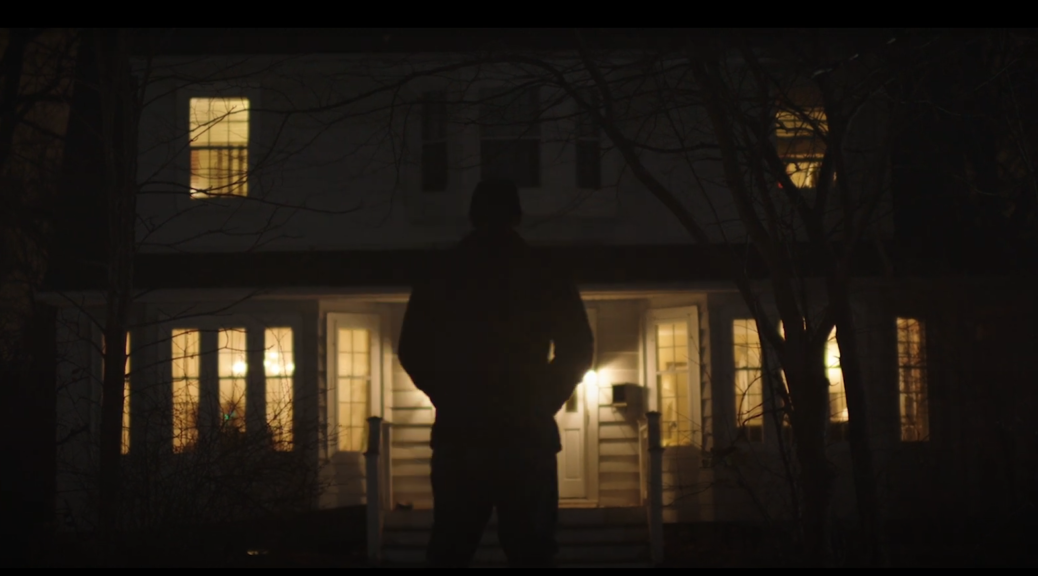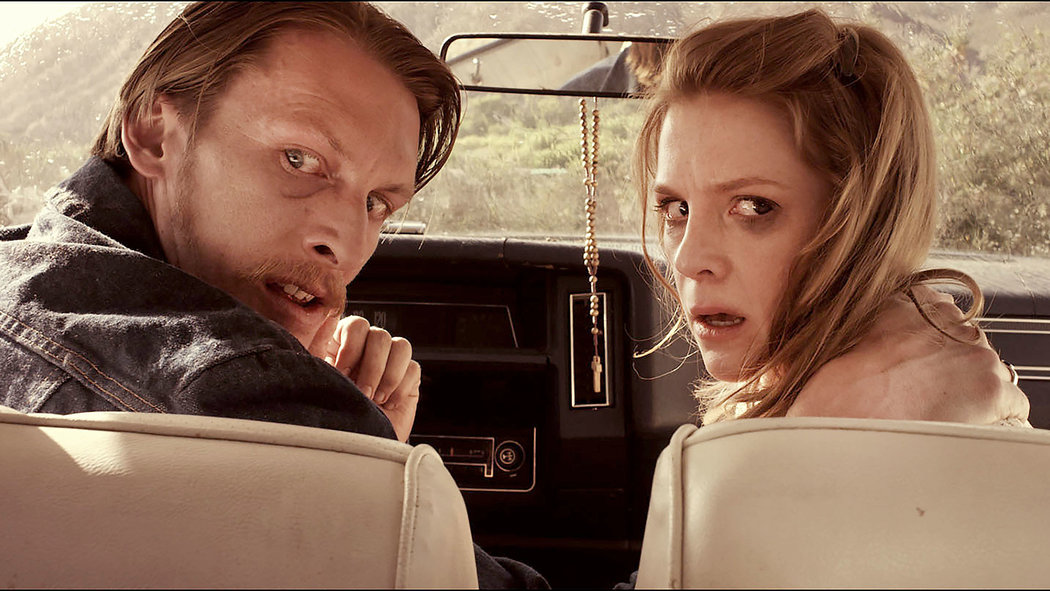Invader
by Hope Madden
Lean, mean and affecting, Mickey Keating’s take on the home invasion film wastes no time. In a wordless—though not soundless—opening, the filmmaker introduces an unhinged presence.
Cut to Ana (Vero Maynez). She’s sleepy, it’s late, the bus is empty except for the driver hustling her off, his voice constant, annoyed, and on repeat: Come on. Get off the bus. Last stop. You gotta go.
It’s 4:30 am. The bus was late, the station is deserted, and Carmilla—Ana’s cousin—is not answering.
Immediately Keating sets our eyes and ears against us. His soundtrack frequently blares death metal, a tactic that emphasizes a chaotic, menacing mood the film never shakes. Using primarily handheld cameras from the unnerving opening throughout the entire film, the filmmaker maintains an anarchic energy, a sense of the characters’ frenzy and the endless possibility of violence.
Keating strings together a handful of believably tumultuous moments early in the film—particularly a couple of run-ins with a horn-blaring cabbie—to work the nerves and leave you feeling as raw and vulnerable as Ana. Rather than dip and settle, Invader delivers relentlessly on that early sense of harried terror.
Scenes possess an improvisational quality that coincides with the rawness of the overall effort. Keating is spare with exposition—if you can’t figure out what’s going on without having it explained to you, you are clearly not paying attention. The verité style accomplishes what it’s mean to, lending Invader an authenticity that amplifies the horror.
Maynez carries that authenticity. Ana never feels written, she feels alive. Her confusion, anger, fear—all of it runs together in a way that reflects what the audience is experiencing in each moment. Her limited screentime with Colin Huerta introduces enough tenderness to give the sense of terror real depth.
Joe Swanberg, with limited screentime and even more limited dialog, crafts a terrifying image of havoc. His presence is perversely menacing, an explosion of rage and horror.
Invader delivers a spare, nasty, memorable piece of horror in just over an hour. It will stick with you a while longer.


